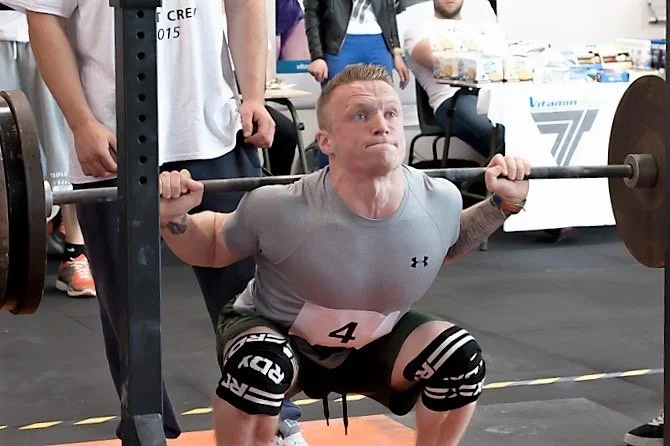How hard do we really need to train?
The short answer is pretty damn hard! You want to push yourself to the point where your muscles really struggle to continue – muscles won't develop unless they need to! It's not necessary to take sets to complete muscular failure, but that doesn't mean it's a bad idea when the occasion calls for it! If you can do so safely, with good technique, you may well benefit from taking some sets to complete muscle failure!
Prefer to watch than read? Then please check out the video below:
What exercises can be taken to failure?
Not all sets, and certainly not all exercises can be taken to failure – some exercises are better suited than others. Curls, triceps extensions, lateral raises, and other isolation exercises can be pushed closer to muscular failure or complete muscular failure and done so safely with impeccable technique.
Whereas big compound movements like barbell squats and deadlifts are better stopped a few reps shy of failure to avoid technique breakdown and injury.
And it's only the final set of an exercise where it can be appropriate to rep out to failure. If you reach failure on your first set, the fatigue will negatively impact your performance on subsequent sets. This means volume takes a hit; volume being total work (weight x reps x sets), and more volume equals more gains, so it's in our interest to avoid doing things that negatively impact this, like destroying ourselves on the first set. But don't be mistaken into thinking you can take it easy. We know that the last few reps of a set are the most effective reps, so don't cut yourself short by calling it a day too soon.
Research on training close to failure
Now, if we look at the research, we can find some studies supporting the idea that going to complete muscular failure will elicit the most gains, and others showing no difference, and I even found one showing going to complete muscular failure being worse for gains. The scientific consensus is to push just shy of muscular failure, leaving only one to three reps in the tank, and the final set of an exercise wants to be particularly close to failure.
The two extremes of the evidence-based recommendations
You'll find some experts stating that you should always go to muscular failure, others saying you should never go to muscle failure as this will negatively impact volume and recovery. The truth and what's optimal is between those two extremes. Pushing super close to muscular failure, but not taking yourself too far, not pushing yourself to the point where you spend the next four days recovering from your session, or worse, get injured.
Summary
To summarise, here are my evidence-based recommendations.
Work hard, and push yourself close to muscular failure, you don't need to go to complete failure, but you want to be close to it – leaving only one, two, or at most three reps in the tank. Too many reps left in reserve means you'll miss out on the most effective reps of the set. The final sets of each exercise want to be especially challenging, and if it's an isolation exercise where you can maintain good technique, you can even take the final sets to complete failure. But don't surpass technical failure (technique breakdown) in the pursuit of hitting muscular failure – safety first!
Training just shy of muscular failure is not easy – the final few reps before true failure are long, gruelling reps. If they're not, then it's possible that you're not truly close to failure. These final reps, just before failure, are where the true magic happens, so enjoy them and embrace them!



